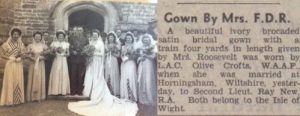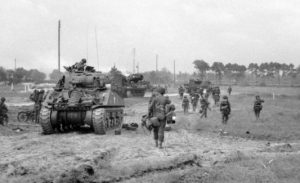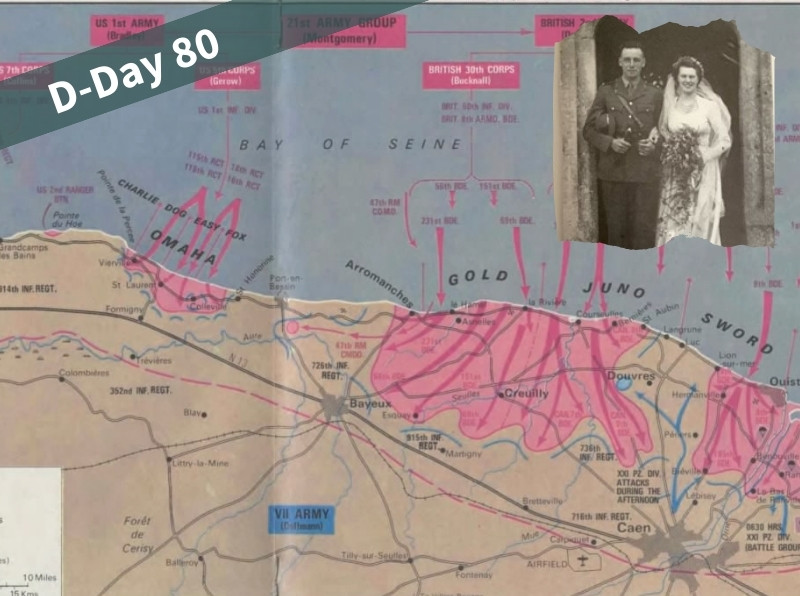Stories from our community for the 80th anniversary of the Normandy landings
In part 3 of our D-Day 80 community stories series, we tackle the difficulties of researching a family member who spoke little of their service on D-Day.
Some spoke little of their experiences
We often hear variations of the expression ‘they didn’t talk about their service’, underlining a desire to forget what most of us will never be able to comprehend. This was the case for many D-Day veterans, including Debbie’s father, Raymond Gordon New. Born in the Isle of Wight in 1919, Raymond’s father, James had been a career soldier in the Royal Artillery, serving in India for a number of years and in Ypres during WWI.
According to documents provided by Debbie, Raymond joined the Royal Artillery in February 1939, as part of the Territorial Army. Perhaps his father’s long and illustrious career with the artillery convinced Raymond this was the regiment for him. With the clouds of war looming on the horizon, Raymond was embodied for service on 2 September 1939, a day before the British declaration of war with Germany. Reaching the rank of Sergeant in 1942, he was fully trained in Howitzer artillery guns that were towed behind a Field Artillery Tractor. Raymond was stationed for a time in Salisbury Plain, Wiltshire before a posting to Gibraltar.
Raymond evidently impressed while serving in the ranks as he was put forward for a commission as an officer. After receiving his officer training at an Officer Cadet Training Unit, Cadet Raymond Gordon New proudly received a commission as a Second Lieutenant with the Royal Artillery on 17 December 1943.
The upcoming invasion of Normandy accelerated life plans, and Raymond and his fiancee Olive Crofts were aware of the need to take opportunities while they could. They brought their wedding forward so they could be married before
Raymond went over on the landings, tying the knot with a special licence on 22 May 1944, knowing Raymond may not return.

Olive was a teleprinter operator in the Women’s Auxiliary Air Force stationed at Longleat, Wiltshire. Debbie writes of her mother:
‘She wore a dress donated by American ladies, hers was donated by Eleanor Roosevelt and the Americans provided a wedding reception…’
According to Debbie’s research, her father landed on Sword Beach on 7 June 1944, or D+1. After Operation Overlord, he continued to serve throughout the campaign in North West Europe and was discharged in July 1946 as a Lieutenant. Debbie notes that:
‘My Dad rarely shared his experiences with us, I think his generation were very stoic, they saw so many terrible things and experienced so many great losses.’
FWR Tip: If your research experience echoes that of Debbie’s, then our blog Researching WWII ancestors: overcoming the challenges could help you make those all-important discoveries about your WWII family members.
Raymond did, however, share snippets of his service with Debbie, allowing us to paint a brief picture of his D-Day experience:
‘Some of the things he would tell us’, writes Debbie, ‘were about helping villagers after the fighting was all over or stories of being run off the road on his army issue motorbike by Montgomery’s entourage or being landed on the wrong beach during the landings. He didn’t talk about fighting.’

D-Day 80: a time for reflection
Debbie writes of her father:
‘I am very proud of my Dad, not because he fought for King and country, although I think he was very brave to do so, but more because he acknowledged that the ordinary German soldiers fighting were family people just like him and his soldiers, most of them didn’t really want to fight. It was out of the everyday man’s hands. My Dad never glorified war.’
FWR Tip: If your family member spoke little of their military service and you’d like to learn more, try ordering their service record. It can help you gain a greater insight into their wartime service and piece their movements together. WWII British Army officers’ records are held by the MOD, along with Royal Navy and RAF records, while the WWII service records of British Army other ranks’ can be obtained from The National Archives.
Stay posted for part 4 of our D-Day 80 community stories blog, where we will be exploring the important role the RAF played during D-Day, through another fascinating community story.
This blog is largely based on the information provided by the community member and records where available.
Cover image: Map from our Historical Documents Library (publisher: Purnells), wedding image provided by Debbie Sara.


